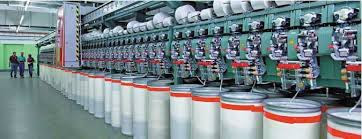What cooling methods are used in your isolation transformers?
Isolation transformers are critical components in many electrical systems, providing a variety of functions including voltage transformation, noise reduction, and the crucial role of electrical isolation. However, like all electrical devices, they generate heat during operation. Effective cooling is essential to ensure that they operate efficiently and safely over their intended lifespan. In this comprehensive guide, we will explore the various cooling methods used in isolation transformers, highlighting their mechanisms, benefits, and applications.
The Importance of Cooling in Isolation Transformers
Before delving into the specifics of cooling methods, it’s important to understand why cooling is so crucial for isolation transformers:
- Heat Dissipation: Transformers convert electrical energy from one circuit to another, and this process inevitably generates heat due to core losses (hysteresis and eddy currents) and copper losses (I²R losses). Effective heat dissipation prevents overheating, which can degrade insulation materials and other components.
- Efficiency and Performance: Proper cooling maintains the efficiency and performance of the transformer. High temperatures can increase resistance in the windings, reducing efficiency and potentially causing thermal runaway.
- Safety: Overheated transformers pose a fire hazard and can lead to catastrophic failures. Effective cooling methods reduce these risks.
- Longevity: Maintaining optimal operating temperatures ensures the longevity of the transformer, as excessive heat can accelerate the aging of insulating materials and other components.
Common Cooling Methods for Isolation Transformers
Several cooling methods are used to manage the heat generated by isolation transformers. The choice of method depends on factors such as the transformer's size, application, and operating environment.
- Air Natural (AN) Cooling
Description: Air Natural (AN) cooling, also known as self-cooled or natural air cooling, relies on natural air circulation around the transformer to dissipate heat. This method is commonly used in smaller transformers.
Mechanism: The transformer's heat is transferred to its surface through conduction. The natural air surrounding the transformer then absorbs this heat and dissipates it into the environment through convection.
Benefits:
- Simplicity: Requires no additional equipment or energy input.
- Cost-effective: Low installation and maintenance costs.
- Reliability: No moving parts, leading to high reliability and low failure rates.
Applications: Small isolation transformers are used in residential or light commercial applications where heat generation is minimal.
- Air Force (AF) Cooling
Description: Air Force (AF) cooling enhances the natural air cooling method by using fans or blowers to increase the airflow around the transformer.
Mechanism: Fans or blowers are strategically placed to direct air over the transformer’s surface, enhancing the heat dissipation rate by forced convection.
Benefits:
- Enhanced Cooling Efficiency: Improved airflow results in better heat dissipation.
- Adaptability: Suitable for a range of transformer sizes and cooling requirements.
- Scalability: Fans can be added or adjusted to meet specific cooling needs.
Applications: Medium-sized transformers in commercial or industrial settings where natural air cooling is insufficient.
- Oil Natural Air Natural (ONAN) Cooling
Description: Oil Natural Air Natural (ONAN) cooling utilizes insulating oil to transfer heat from the transformer core and windings to the transformer tank, where it is then dissipated into the surrounding air.
Mechanism: The insulating oil circulates naturally within the transformer. As it absorbs heat from the core and windings, it rises to the top of the transformer tank, where it releases heat to the tank walls. The cooler oil then sinks, creating a natural convection cycle.
Benefits:
- Effective Heat Transfer: Oil provides excellent heat transfer properties.
- Improved Insulation: Oil acts as an additional insulating medium.
- Reliability: No mechanical parts are involved in the cooling cycle.
Applications: Medium to large transformers in various applications, including industrial plants and power distribution systems.
- Oil Natural Air Forced (ONAF) Cooling
Description: Oil Natural Air Forced (ONAF) cooling is similar to ONAN but adds external fans to enhance the cooling of the transformer tank.
Mechanism: Fans or blowers are installed on the transformer tank to increase the rate of air movement across the tank surface, thereby enhancing the heat dissipation from the oil to the air.
Benefits:
- Enhanced Cooling Capacity: Fans improve the efficiency of heat dissipation, allowing the transformer to handle higher loads.
- Scalability: Suitable for transformers that need variable cooling capacities.
- Flexibility: Fans can be turned on or off as needed, providing dynamic cooling control.
Applications: Large transformers with variable load conditions, such as those in power plants and large industrial facilities.
- Oil Forced Air Forced (OFAF) Cooling
Description: Oil-forced air-forced (OFAF) cooling uses pumps to circulate the oil and fans to move the air, providing an even more efficient cooling method.
Mechanism: Pumps actively circulate the insulating oil within the transformer, while fans force air over the heat exchanger or transformer tank, significantly enhancing heat dissipation.
Benefits:
- Maximized Cooling Efficiency: Combines forced oil circulation and air movement for superior cooling performance.
- High Capacity: Suitable for transformers with very high power ratings.
- Temperature Control: Allows precise control over operating temperatures.
Applications: Extra-large transformers are used in critical applications such as power generation and high-voltage transmission.
- Oil Natural Water Forced (ONWF) Cooling
Description: Oil Natural Water Forced (ONWF) cooling uses water as an additional cooling medium, typically in systems where air cooling is insufficient.
Mechanism: The insulating oil circulates naturally within the transformer, transferring heat to a water-cooled heat exchanger. Water pumps then circulate the water, which carries away the heat.
Benefits:
- High Efficiency: Water has a higher heat capacity than air, making it more effective for cooling.
- Compact Design: This allows for a more compact transformer design compared to air-cooled systems.
- Suitability for Harsh Environments: Effective in environments where air cooling is impractical or inefficient.
Applications: Large transformers in industrial facilities or locations with high ambient temperatures.
- Oil Forced Water Forced (OFWF) Cooling
Description: Oil-forced water-forced (OFWF) cooling uses pumps to circulate both oil and water, providing the highest level of cooling efficiency.
Mechanism: Pumps actively circulate the oil, transferring heat to a water-cooled heat exchanger. Water pumps then circulate the water, which carries away the heat. This dual-forced system ensures maximum heat transfer efficiency.
Benefits:
- Ultimate Cooling Performance: Offers the most effective cooling for the highest power ratings.
- Precise Temperature Management: Allows for tight control over transformer operating temperatures.
- Reliability: Suitable for critical applications requiring uninterrupted cooling.
Applications: Extra-large transformers in power plants, high-voltage transmission networks, and other critical infrastructure.
Choosing the Right Cooling Method
Selecting the appropriate cooling method for an isolation transformer involves considering several factors:
- Transformer Size and Rating: Larger transformers with higher power ratings generate more heat and typically require more robust cooling solutions.
- Operating Environment: The ambient temperature and environmental conditions play a significant role in determining the cooling method. For instance, water-cooled systems are preferable in high-temperature environments.
- Load Conditions: Transformers with variable or high load conditions benefit from dynamic cooling methods such as ONAF or OFAF, which can adapt to changing heat dissipation needs.
- Installation and Maintenance: The complexity and cost of installation and maintenance vary between cooling methods. Natural air and oil cooling systems generally have lower installation and maintenance costs compared to forced cooling systems.
- Safety and Reliability: Ensuring the safety and reliability of the cooling system is paramount. Forced cooling methods, while more efficient, require careful monitoring and maintenance to prevent mechanical failures.
Conclusion
Effective cooling is essential for the optimal performance, safety, and longevity of isolation transformers. Understanding the various cooling methods available—from simple air-natural cooling to sophisticated oil forced water forced systems—allows engineers and operators to select the best solution for their specific needs. As the demand for reliable and efficient power systems continues to grow, the development and implementation of advanced cooling technologies will remain a critical focus in the design and operation of isolation transformers.
By investing in the right cooling solutions, industries can ensure that their transformers operate efficiently, safely, and reliably, contributing to the overall stability and performance of electrical systems worldwide.




Comments
Post a Comment